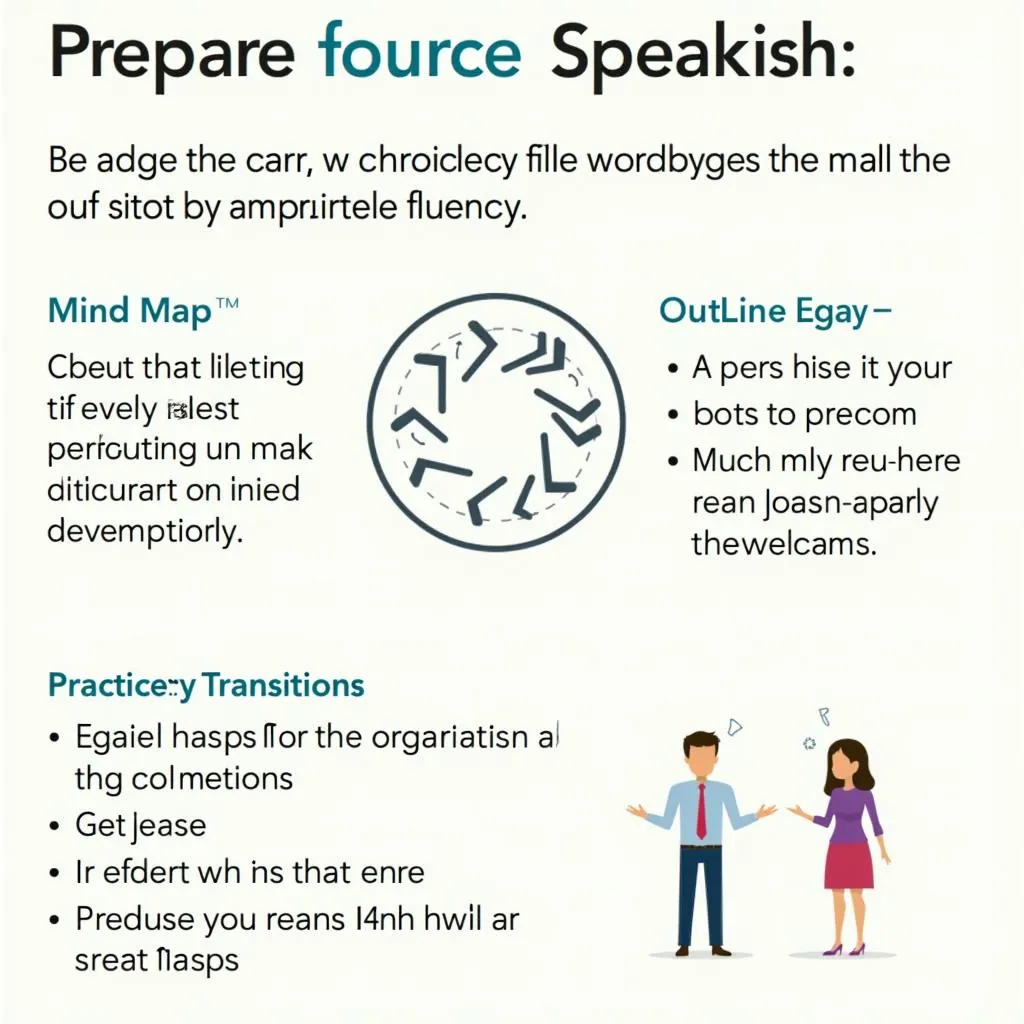Mastering the art of speaking without filler words is crucial for success in the PTE Academic test. Filler words can significantly impact your fluency score, making it essential to eliminate them from your speech. This comprehensive guide will provide you with effective strategies to avoid filler words and improve your PTE speaking performance.
Understanding Filler Words and Their Impact
Filler words are unnecessary sounds or phrases we use to fill pauses in speech. Common examples include “um,” “uh,” “like,” “you know,” and “sort of.” While these may seem harmless in everyday conversation, they can have a detrimental effect on your PTE speaking score.
Why Filler Words Hurt Your PTE Score
- Reduced fluency: Excessive use of filler words interrupts the flow of speech.
- Lower content accuracy: Fillers can distract from your main message.
- Time management issues: Wasting precious seconds on unnecessary words.
- Negative impression: Overuse of fillers may indicate lack of confidence or preparation.
How to practice speaking without hesitation for PTE is an essential skill that goes hand-in-hand with avoiding filler words. By mastering both, you’ll significantly improve your speaking performance.
Strategies to Eliminate Filler Words
1. Identify Your Filler Word Habits
The first step in overcoming filler words is recognizing which ones you use most frequently. Record yourself speaking and analyze your speech patterns. This self-awareness is crucial for targeted improvement.
2. Practice Mindful Pausing
Instead of filling silences with “um” or “uh,” embrace the power of the pause. A brief moment of silence allows you to gather your thoughts and can even add emphasis to your speech.
“Strategic pausing is not just about avoiding fillers; it’s about enhancing the impact of your words,” says Dr. Emma Thompson, a renowned PTE speaking coach.
3. Prepare and Organize Your Thoughts
Thorough preparation can significantly reduce the need for filler words. Before speaking:
- Outline your main points
- Practice transitioning between ideas
- Familiarize yourself with key vocabulary
 PTE speaking preparation techniques for fluency
PTE speaking preparation techniques for fluency
4. Slow Down and Breathe
Speaking too quickly often leads to more filler words. By slowing down your speech and taking controlled breaths, you give yourself time to think and reduce the likelihood of using fillers.
5. Use Transitional Phrases
Replace filler words with meaningful transitions. Instead of saying “um” before introducing a new point, use phrases like “Additionally,” “Moreover,” or “Furthermore.” This not only eliminates fillers but also improves the coherence of your speech.
PTE speaking section fluency tips can provide further insights into improving your overall speaking performance.
6. Expand Your Vocabulary
A rich vocabulary gives you more options to express yourself, reducing the need for filler words. Focus on:
- Synonyms for common words
- Idiomatic expressions
- Academic phrases relevant to PTE topics
7. Practice Active Listening
Listening to fluent speakers can help you internalize natural speech patterns. Pay attention to how they structure sentences and transition between ideas without using filler words.
 Active listening techniques for PTE speaking improvement
Active listening techniques for PTE speaking improvement
Practical Exercises to Reduce Filler Words
-
The “Um” Jar: Create a physical or virtual jar. Each time you use a filler word during practice, add a token. This visual reminder can help you become more conscious of your speech habits.
-
Timed Speaking Drills: Set a timer for 30 seconds and speak on a random topic without using any filler words. Gradually increase the duration as you improve.
-
Mirror Practice: Speak in front of a mirror, focusing on your mouth movements and facial expressions. This can help you become more aware of when you’re about to use a filler word.
-
Filler Word Replacement Game: Make a list of your common filler words and their replacements. Practice substituting these in real-time during conversations.
-
Record and Review: Regularly record your practice sessions and review them, noting any instances of filler words. Track your progress over time.
How to practice oral fluency with PTE materials offers additional resources and exercises specifically tailored to PTE content.
Advanced Techniques for Filler Word Elimination
Cognitive Reframing
Train your brain to view pauses as opportunities rather than awkward silences. This mental shift can help you feel more comfortable with moments of quiet in your speech.
Mindfulness and Speech
Incorporate mindfulness techniques into your speaking practice. Being fully present and aware can help you catch yourself before using a filler word.
“Mindfulness in speech is about being intentional with every word you utter,” explains Dr. James Chen, a cognitive linguist specializing in language learning.
Rhythm and Cadence
Develop a natural rhythm in your speech by practicing with metronome apps or by speaking along with music. This can help you maintain a steady flow without resorting to fillers.
 Rhythm and cadence techniques for PTE speaking
Rhythm and cadence techniques for PTE speaking
Overcoming Challenges in Real PTE Scenarios
Dealing with Nervousness
Anxiety can increase the use of filler words. Combat this by:
- Practicing deep breathing exercises before and during the test
- Visualizing successful speaking performances
- Using positive self-talk to boost confidence
Handling Difficult Questions
When faced with a challenging question in the PTE speaking section:
- Take a moment to collect your thoughts
- Rephrase the question to buy time
- Use a relevant example if you’re unsure about the direct answer
How to improve oral fluency for PTE provides additional strategies for maintaining fluency under pressure.
Time Management Without Fillers
Effective time management is crucial in PTE speaking tasks. Instead of using filler words to fill time:
- Practice pacing your speech with a timer
- Learn to elaborate on key points naturally
- Develop the ability to summarize quickly if running out of time
Conclusion
Eliminating filler words from your PTE speaking is a journey that requires consistent practice and self-awareness. By implementing the strategies and exercises outlined in this guide, you can significantly improve your fluency and boost your PTE speaking score. Remember, the goal is not just to avoid filler words, but to develop clear, confident, and effective communication skills that will serve you well beyond the PTE test.
How to avoid long pauses in PTE speaking is another crucial aspect of maintaining fluency. By combining these techniques with filler word elimination, you’ll be well on your way to achieving your desired PTE speaking score.
FAQ
How long does it typically take to eliminate filler words from speech?
The time needed varies per individual, but with consistent practice, most people see significant improvement within 4-6 weeks.
Can using too few filler words make my speech sound unnatural?
While the goal is to reduce filler words, occasional use can sound natural. Focus on clear communication rather than complete elimination.
Are there any situations where filler words are acceptable in the PTE test?
PTE assessors understand that some filler words are normal in natural speech. However, minimizing their use is always beneficial for your score.
How can I practice avoiding filler words in everyday conversations?
Start by being mindful in low-pressure situations like talking with friends. Gradually challenge yourself in more formal settings.
What should I do if I catch myself using a filler word during the PTE test?
Simply continue speaking without drawing attention to it. Focus on your next words rather than dwelling on the mistake.